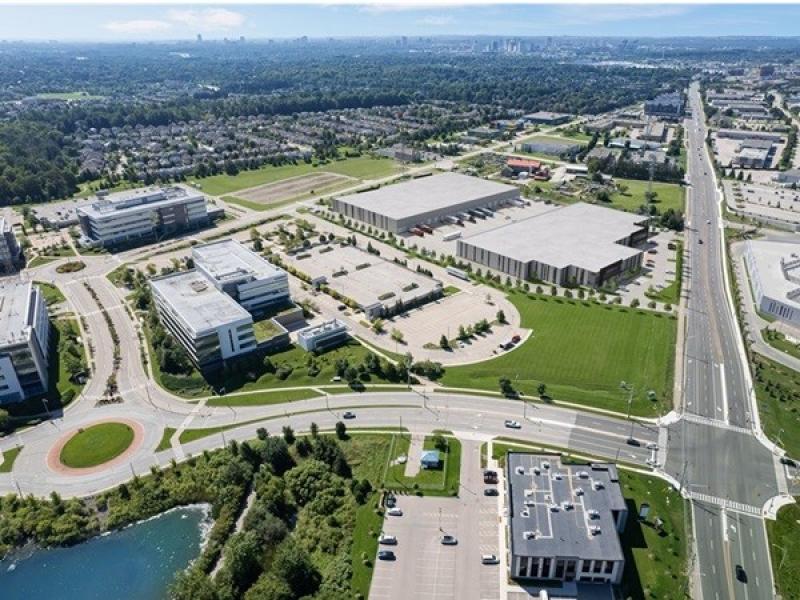
As demand surges for data storage and cloud computing, data centres have emerged as one of Canada’s most dynamic and lucrative real estate asset classes.
A May 28 Urban Land Institute Toronto webinar explored the opportunities and challenges shaping data centre investment and development. It was kicked off by an overview provided by PwC Canada economics and policy partner Mikaela McQuade.
While vacancy rates are already at all-time lows, it’s estimated the growth of the Canadian data centre market will more than double by 2030.
That will be driven by a mix of enterprise builds of hyperscale campuses and third-party co-location expansions around Toronto, Montreal, Vancouver and Calgary.
“In Ontario alone, data centres represent about 13 per cent of new electricity demand and about four per cent of total anticipated Ontario energy demand by 2035, which is really significant in terms of not only the generation capacity that you need but the consequential infrastructure you need to support it and transmit it,” McQuade explained.
Evolution of data centres
PwC Canada deals partner Chloe Ho then moderated a panel discussion involving:
- Invest Alberta chief executive officer Rick Christiaanse;
- eStruxture Data Centers senior vice-president Strahan McCarten;
- EllisDon senior VP and area manager for life sciences and technology Dan Jolivet;
- and Investment Management Corporation of Ontario digital infrastructure principal Andrew Solomon.
eStruxture is a multi-tenant data centre operator and McCarten said Canada is a uniquely well-positioned market because of its lower temperatures, which helps with cooling, as well as relatively stable power supplies, and regulatory and government markets. He’s seen a big change in data centres over the past several years.
“There's been a massive shift from lots of small customers to much larger deployments,” McCarten observed. “Instead of building out a one-megawatt data centre for 300 customers, we might build out a 50-megawatt data centre and have two customers in it — both of those being very large customers.”
Despite the huge increase in the consumption of technology over the past 10 years, and still-increasing demand, McCarten attributes much of the growth to the adoption of cloud computing. He said the demand for artificial intelligence (AI) data centre capacity is going to push things even harder.
Data centre site selection
Finding adequate sources of power, and utility and fibre connectivity, are the biggest challenges in selecting sites for data centres. Many are moving farther out from downtown cores because latency isn’t as critical now as when they were supporting specific businesses.
“As a multi-tenant data centre operator, we're trying to get multiple customers to come into these sites and they can take as much or as little capacity as as they need,” said McCarten.
Canada doesn’t have the bulk fibre availability that some American markets do, which McCarten said has deterred some large hyperscale customers from coming north of the border.
A strong labour pool that can operate and maintain the electrical and mechanical equipment at these mission-critical sites is critical, and a location that customers can access relatively easy is also important.
“These sites are very long-term investments,” McCarten said. “You should think about them in the same sort of breadth as airports and bridges for these companies. They don't just move them around. It’s a massive investment of time and energy.”
Financing and building data centres
“The IPO markets have not come around yet to some of the assets and companies and structures that are prevalent today,” said Solomon while addressing data centre development, which usually involves land banking in order to have a pipeline for future projects.
“We're seeing capital coming from REITs to provide some of that liquidity.”
EllisDon has constructed data centres with a combined output of over 700 megawatts, and they’ve been growing in size so the company has expanded its pre-construction teams.
“With AI coming to the market, we're getting involved even earlier,” Jolivet said. “We're getting involved at the developer level.”
Building new facilities can often be less expensive than retrofitting buildings not originally designed as data centres, according to Jolivet.
“Building a data centre is easiest if it's in a big rectangular box,” said McCarten, who noted retrofitting multi-storey commercial buildings in urban settings isn’t ideal, but the locations are critical for telecommunications purposes.
Major cities will therefore have what are known as carrier hotels, where network providers pull fibre and exchange traffic.
“eStruxture tends to have a downtown urban facility that’s carrier-dense, and then we will also have spoke facilities in suburban regions where we build much larger footprints” because it’s cheaper and easier, McCarten explained.
Alberta wants to be an AI data centre hub
Christiaanse said Alberta is a good fit for AI-driven data centres because it has low-cost energy, particularly natural gas, and wants to build out its green energy capabilities. It also has skilled labour and a regulatory environment that allows global data centre investment.
The province has created a strategy to attract data centre investment by creating investor-friendly conditions and facilitating long-term relationships.
“We want to actively build a framework to become a global hub for digital infrastructure,” Christiaanse said, “and we have the policy and procedures in place to make that happen.”
Christiaanse views Virginia and Texas as Alberta’s biggest competitors for these types of facilities, as they’ve been North America’s industry leaders. He hopes the province’s strategy will help it catch up. It has done a lot of work to bring investors, municipalities, utilities, provincial agencies and other stakeholders together.
“Rather than waiting for investors to show up and then starting that work, my team has a pre-selected list of pre-qualified sites,” Christiaanse said. “The beauty of AI is that you can locate sites further away from Calgary, where most of the data centres in Alberta have been located.”










